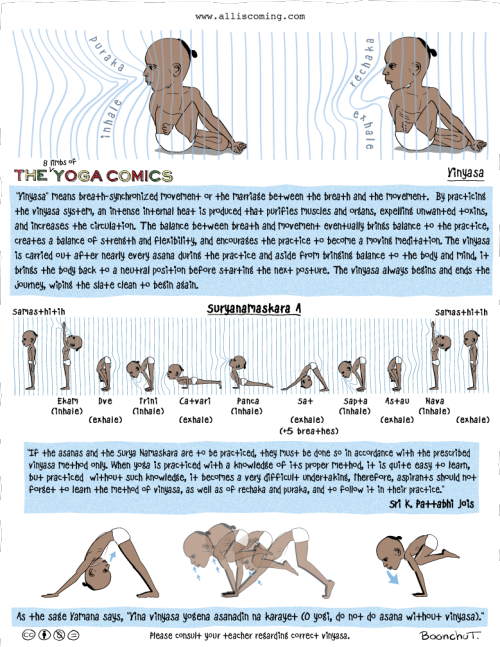I've heard this brought up in conference on multiple occasions, meaning that I've witnessed the question being asked of the current lineage holder of the Shri K. Pattabhi Jois Ashtanga yoga method - R. Sharath Jois. The bandhas and breathing in the system are very specific. Listen properly! Also good to realize the importance of the student-teacher relationship...
The Same River
There is some contention around the idea of “traditional” Ashtanga.
Traditionalists would be the teachers and practitioners that follow the practice as it is taught in Mysore, India. We practice 6 days a week, with rest days on Saturdays and the days of the full and new moon. Practice is done “Mysore-style,” in a group setting. We progress pose-by-pose through one of the six series. That would seem like a fairly straightforward distinction, but it gets more complicated. Some of the fine details of the teaching have changed over the last 50 years. Some postures have been added or taken out, some have different entrances and exits, and some have longer or shorter holds. So, a teacher who went to Mysore in 1980 might be teaching Ashtanga as they learned it back then, and calling it “traditional”, while someone who went to Mysore last year might also call their practice traditional. Their practices would show many differences. Who’s right?
The practice has altered very little since my first visit to India, 9 years ago. The poses and vinyasa count, as they are taught now, are almost exactly the same as they were taught to me on that first visit. However, there have been some small changes. So, every year, when I return to Mysore, I listen carefully to Sharath as he leads us through the led classes and lectures in the weekly conference. Whenever I notice a change, I integrate it into my teaching. That means that when I get back to Toronto and my home shala, I teach all my students the new version. Most of the time the changes aren’t actually new information, but clarifications and corrections, a sharper focus on the already existing details.
On my last trip to Mysore, I heard something new. It was during the weekly conference with Sharath. While talking about the breath during practice, someone mentioned “Ujjayi Breath.” Sharath corrected them, saying Ujjayi is a pranayama, a formal breathing exercise, and then moved on to another topic.
At first, I assumed I had misunderstood what Sharath was saying. I had always thought Ujjayi Breath was one of the key principles of Ashtanga Yoga. Confused, I went to the source, Yoga Mala, by Sri K Pattabhi Jois, to see what he had written more than 50 years ago. To my surprise, there is no mention of Ujjayi Breath with vinyasa. None.
A month later I saw Sharath again. I had the chance to ask him if we do Ujjayi Breath during our asana practice. He said no, explaining that Ujjayi Breath is one of the Pranayama techniques of Ashtanga Yoga. In Ashtanga, Pranayama is begun only when a practitioner has started the Advanced Series. During our asana practice we only do steady and even puraka and rechaka, inhalation and exhalation.
It would be easier if we could think of the tradition as unwavering; that the practice of Ashtanga Vinyasa Yoga has remained unaltered since its inception. But no tradition is like that; nothing stays the same. The Greek philosopher Heraclitus wrote, “Ever-newer waters flow on those who step into the same rivers." I think of the teaching the same way. The tradition is not still. At different moments in time it has been taught with this or that vinyasa, this or that count, but it is always from the same source. It would be impossible for me to follow the tradition without listening to my teacher. The river is always changing, but its source is always the same.
Be sure to read the comment section as well here
David Robson is the co-owner and director of the Ashtanga Yoga Centre of Toronto, where he leads one of the world’s largest Mysore programs. He made his first trip to Mysore, India in 2002, where he initiated studies with his teacher Sharath Jois. Since then he has returned annually to deepen and enrich his practice and teaching. He is Level-2 Authorized by the
Sri K. Pattabhi Jois Ashtanga Yoga Institute.
republished with permission





